“Holy Curse” (2024), directed by Snigdha Kapoor, is a short film that rips open the fragile underbelly of identity, ritual, and belonging—without ever softening its blows. It opens with Radha, just 11, caught at the crossroads of immigrant life in the U.S. and the weight of inherited Indian tradition. From the first moments, the film thrums with tension: puberty, identity, and family expectations press in from all sides. Radha is non-binary, and their gender identity isn’t framed as a quiet, private reckoning; it erupts into the world—a disruption their family perceives not as truth but as something to be contained, managed, or “fixed.”
Radha’s need to go through the orthodox rituals and astrological cures in “Holy Curse” is not simply a convenience of storytelling; it’s a look at how tradition operates as a regulatory power of social normativity, specifically in reference to gender identity. Use of ritual and astrology by the family to “fix” what they see as deviation is a form of social discipline consonant with Foucauldian power over body and identity: identity is something that needs to be surveilled and “fixed” rather than confirmed.
In doing so, the film positions Radha as a product of gendered subject formation in which their self is illegitimate not for any inherent lack but because the social imagination cannot sanction difference. Tradition in “Holy Curse”, therefore, serves as a technology of fixity: rituals, horoscopes, ancestral ideologies all working to position Radha inside normative curves of identity, even when their body, their mind, will not be contained.
That opening sequence, where ritual and astrology are not so much cultural color but coercive force, establishes the tone for all Radha endures; it’s not balanced belief, it’s pressure gauged against the body. The film makes certain that the family, especially the uncle, is not acting out of malice per se, but out of a social logic where nonconformity is a disruption of order.
Eleven-year-old non-binary Radha becomes the contested ground where tradition, immigrant identity, and orthodox ritual collide. Their uncle turns to astrology and inherited rites, interpreting Radha’s gender identity as an “unnatural” aberration—something to be purified through puja and priestly intervention. What Radha embodies is cast not as truth but as transgression, a “curse” that unsettles familial order, laden with fear, moral judgment, and the weight of inherited belief.
Radha’s presence as a “curse” — an embodiment of ancestral displacement, moral weight, and quiet terror — reverberates across centuries, reaching back to the witch-hunts of Early Modern Europe and forward to modern-day scapegoating, where otherness is cast as evil, unnatural, and dangerous.
In those European witch trials, the suspects were typically older women, midwives, folk healers, or marginal members of society who were not only suspected of practice but of evil; their bodies were arenas upon which collective fears, social or economic strain, deviant gender performance, or nonconformity were projected. “The Malleus Maleficarum” (1486) codified how systems of belief could convict an individual a “witch” and thereby legitimize persecution. These historical witch-hunts show how moral panic works: fear of difference + supernatural transgression belief + institutional and communal enforcement = violence, ostracization, shame.
The moral weight and terror about “curse” also return to the epistemology of belief in witchcraft: that to explain bad luck, be it illness, puberty, or nonconformity, via supernatural explanations is to attribute moral failure to difference. Anthropologists like E.E. Evans-Pritchard show that in the majority of societies, to accuse a person of being “cursed” or a witch is a way of attributing bad luck, but also of socialising blame. It becomes not something the person is, but something that the group fears. In “Holy Curse,” Radha is demonised by traditions (real or familial) for being “affected” by a curse; this places their identity into the mould of danger, bad luck, something to be cleansed or expelled rather than accepted.
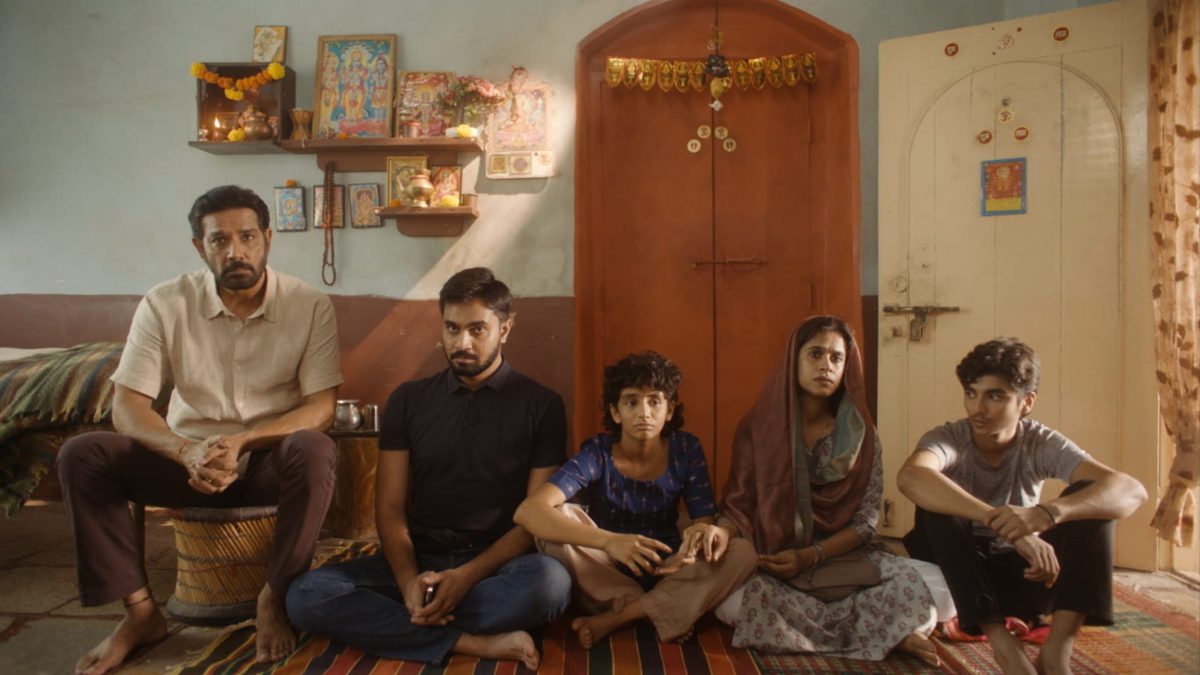
Don’t Miss Out: 10 Unconventional Coming-of-Age Movies Worth Exploring
The comparison reminds us that “curse” is exclusionary language. It requires obedience, it forces confession, it alienates the “other.” And to that extent, then, the film is revolutionary: it makes us aware of how today such logics prevail, how non-binary identity or gender difference is often seen as “problematic,” “needs to be fixed,” as moral and spiritual disturbance.
The pathos of the movie is sharper because the “curse” trope is so old: the movie doesn’t just tell us about one child’s battle, it frames that battle in the context of historical persecution. It challenges us to ask: when has society ever actually allowed someone labeled “cursed” to just exist without judgment? And at what price does it cost them, and the world, that we still make use of such scripts of fear in the name of tradition or faith?
As Radha undergoes ritual and astrology in the attempt to “cure” that which the family experiences as a deviance, I don’t just read a narrative about coercion; I see the mechanisms by which culture and belief can be used as tools of violence. It’s not the overt oppression that is most painful; it’s the normalizing of it, the way in which religion is politicized, the way in which loving relatives become complicit agents of shame.
One of the film’s most striking leaps lies in how it renders Radha’s struggle achingly intimate without ever tipping into sentimentality. The confusion, the quiet betrayals, the crushing weight of every glance that brands them as “other” are evoked rather than articulated, simmering beneath the surface. Juhi Sharma’s camerawork rejects ornamental sheen in favor of restraint: still surfaces, the grain of wooden panels, the flat luster of ritual cloth, and the muted gleam of oil lamps casting uneven shadows across walls, where idols and puja finery linger in quiet corners.
In ritual-preparation shots, ritual objects, incense sticks, diyas, embroidered fabrics with traditional patterns, are not just decoration but anticipation tools: the setting, gloss, ritual order tell more than words. Sharma shoots Radha often in half or side light so that half of their face is illuminated by lamps or sunlight, the other remaining dark. That chiaroscuro becomes one metaphor for inner conflict: the part of self that is nurtured vs. the one hidden.
At times, the camera lingers in long, unbroken takes, letting ritual incantations reverberate through the frame and Radha’s quiet resistance surface wordlessly — a hand hovering above the diya, fingers folding into fabric — gestures suspended in air, weighted with unspoken defiance.
The rituals take place within the claustrophobic interiors, littered with domestic artefacts, curtains, shadows; contrasted with brief exterior shots – a doorway, a brief courtyard, perhaps a terrace, where light floods and space is possible. These are moments of relief, but rare ones: visual breathing, glimpses of what else might be.
Cutting is executed by Anadi Athaley: she eschews rapid cuts under emotional tension and lets silence, ambient noise (cloth rustle, off-stage bird or traffic, thud of foot on stone) build. Colour is important: ritual interiors are warm colours – yellows, ochres, subdued red. Radha’s clothing borrows these colours from time to time, but generally is lighter or cooler colours, introducing visual dissonance between self and environment.
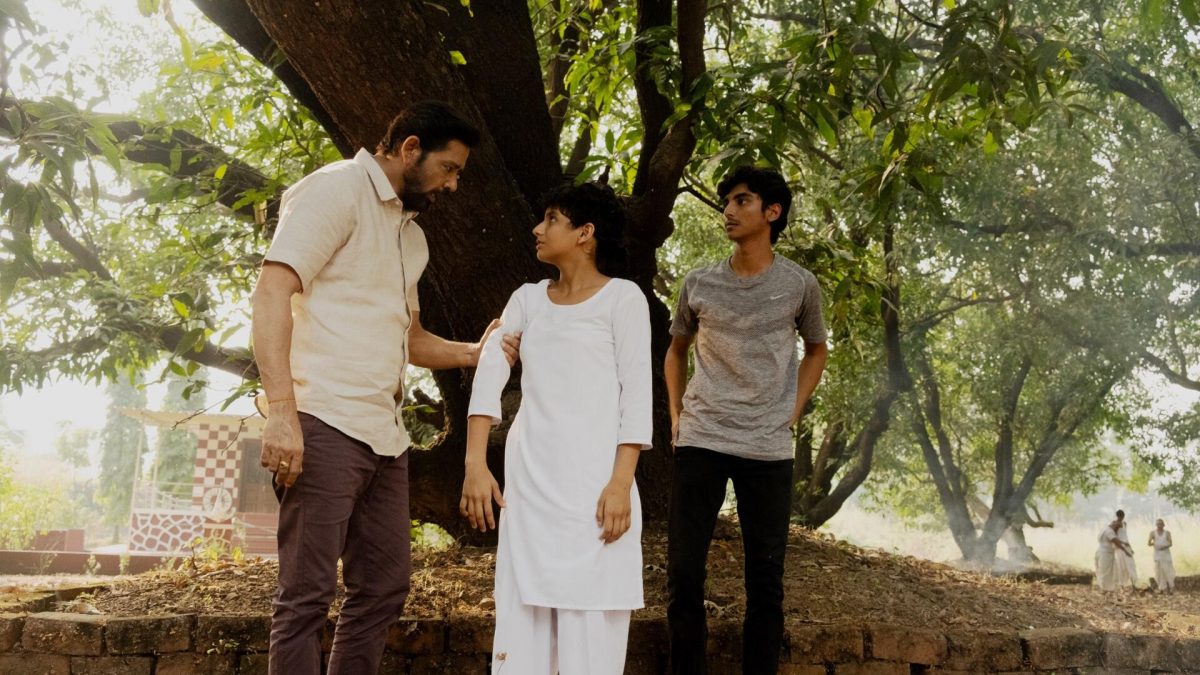
Must Read: ‘Girls Will Be Girls’ Is an Intimate Love Letter to Girlhood & Those Who Missed Out on Theirs
This dissonance places Radha visually outside of their family’s tradition. The teasing by the cousin, the uncle’s declaration, the father’s glance, all are enacted not merely through speech but spatial relationship: Radha pushed to one side, doorway frames that exclude her, chairs pulled back, the spatial distance in the frame between Radha and those policing the ritual.
Snigdha Kapoor crafts a deeply emotive arc of identity, ritual, and interior conflict through Radha, culminating in a final act of rebellion that is at once cathartic and destabilizing. It’s a rupture that seeks to break through inherited boundaries, yet one that may leave the audience suspended in its echo rather than carried toward a neat resolution.
The film’s conclusion, which has been praised as a “powerful” act of resistance in and of itself, does become Radha’s moment of resistance: after having weathered teasing, ritual, astrology, and prescriptive ceremonies from the uncle and broader familial pressure, Radha makes a decision (or performs a gesture) that equals refusal – a reclaiming of self. Yet it’s here that the film’s emotional resonance falters: after building such searing psychological and sociocultural tension, the resolution—though potent in its suggestion—never fully delivers the payoff the narrative has promised. It’s a fracture that undercuts the pathos, leaving the emotional arc just shy of fulfillment.
The narrative tension propelling the movie – ritual vs truth, tradition vs identity, silence vs assertion – has to be let out, and although the conclusion is a kind of breaking point, it’s just a fraction of an inch short. The viewer is left wondering if Radha’s small act of defiance will ripple forward into the next frame, if change will follow, or if silence and repression will take up again in another guise.
This under-resolution may well be intentional, aligning with the film’s thematic insistence on discomfort and rupture — yet emotionally, it risks provoking frustration, even anger. In contrast, the resolutions in works like “In Custody” or “Water,” both of which navigate the friction between tradition and modernity, extend toward a more expansive emotional register, inviting communal reflection rather than leaving the audience suspended in unease.
“Holy Curse” excels in its commitment to the intimate and the immediate, a strength that anchors its emotional core. Yet by withholding any glimpse of what follows Radha’s revolt, the film redirects the viewer’s carefully cultivated sympathy—not toward sorrow, but toward a lingering question: what now? This refusal to resolve is philosophically coherent, mirroring the untidy, unfinished nature of identity itself.
But as drama, it wavers: after such carefully built suspense, some measure of release is needed to sustain emotional resonance rather than leave the audience suspended in uncertainty. Ambiguity, especially when the stakes have climbed so high, carries with it the risk of emotional deflation.
Radha’s dilemma is “highlighted … for the dead-end she is in” – but the ending risks turning that “dead-end” into a stuck picture rather than an instant of transformation. It becomes a picture and not a progression. And in drama, especially identity drama, you need that progression (even symbolic) to carry with you past the edge of the frame. While “Holy Curse” is bold, luminous, and urgently necessary, its ending—brave in its very refusal to offer closure—sometimes registers as a whisper when it most needs to roar.
The pathos falters precisely because the film draws its emotional journey to a close just as it seems poised to take flight, handing the weight of imagining the future over to the audience. To ask this of viewers is a courageous artistic choice, but also a gamble: some will be stirred by the silence, while others may find themselves adrift within it.




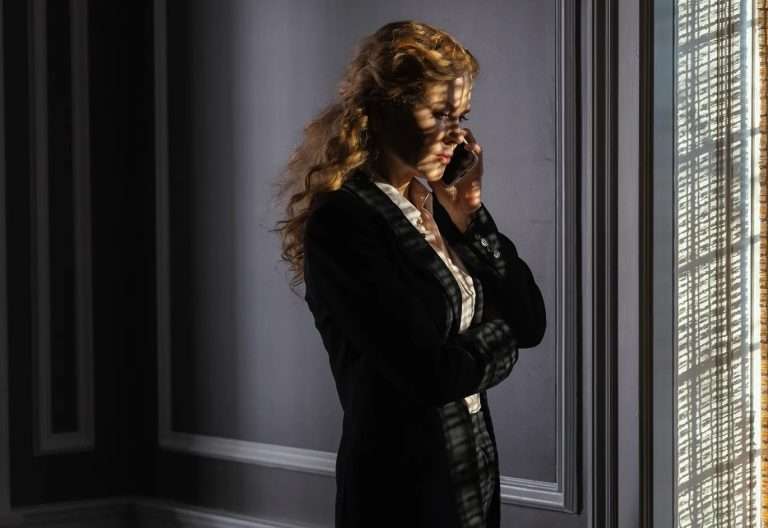
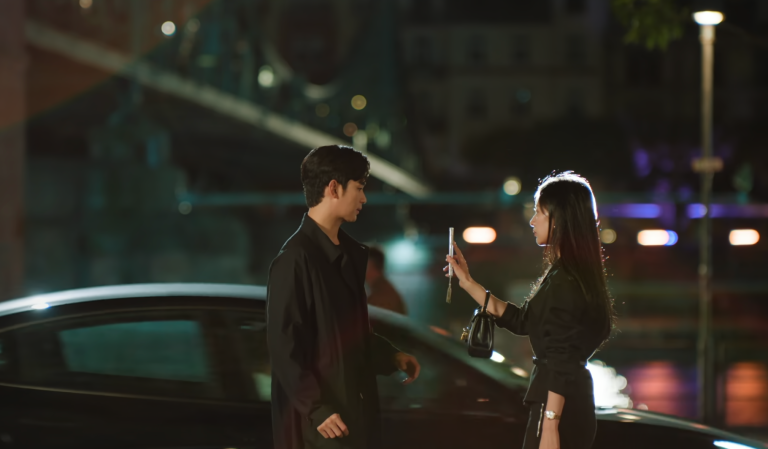


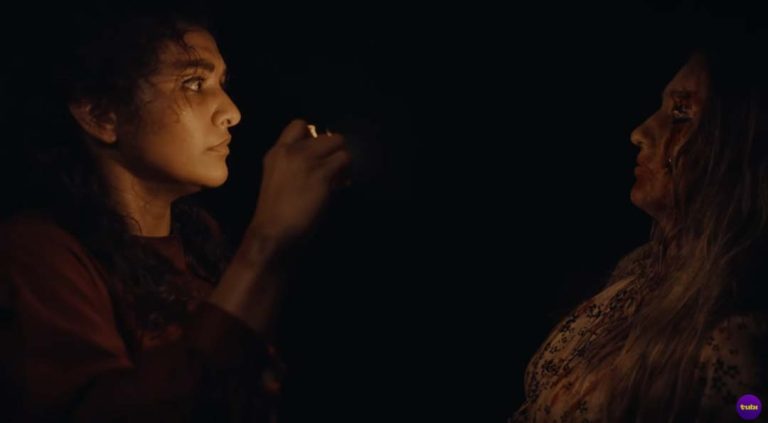
![Swallow [2020] Review – A complex body-horror about a woman trying to regain control](https://79468c92.delivery.rocketcdn.me/wp-content/uploads/2020/03/Swallow1-highonfilms-768x320.png)